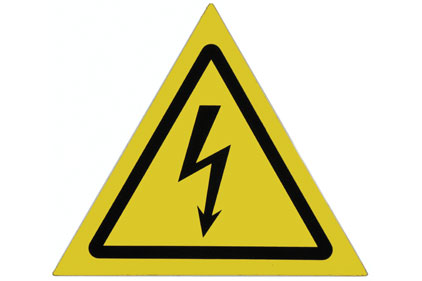Electrical hazards are responsible for more than 300 deaths and 4,000 injuries from burns, shocks and electrocution annually, making them the sixth leading cause of work-related fatalities in the U.S.
In addition to their effects on employee safety, electrical system problems in a workplace also lower productivity and cost businesses money. Electrical system malfunctions are the top cause of fires in commercial buildings.
In terms of nonfatal workplace incidents due to electric shock or burns, contact with an electrical current causes the highest number of days away from work (38% of all cases). This can occur via a machine, tool, appliance or light fixture. Contact with wiring, transformers or other electrical components also leads to a significant number of lost work days. Nonfatal electrical injuries occur most often among those who work with machines or tools or with electrical wiring (other than power lines).1
Industrial worksites aren’t the only ones that can harbor electrical hazards. The Electrical Safety Foundation Institute (ESFI) points out that electrical accidents can happen in office environments as well, and are usually caused by faulty or defective equipment, unsafe installation, or misuse of equipment such as extension cords, power strips, and surge protectors.2
The case for an EPM program
The good news is that many injuries, deaths and property damage caused by workplace electrical hazards can be avoided with an Electrical Preventative Maintenance (EPM) program.
An EPM enables employers to take a systematic approach to electrical safety. At companies without an EPM, management assumes a much greater risk of serious electrical failure and its consequences, according to the National Fire Protection Association (NFPA).
The NFPA 70B standard for electrical equipment maintenance states: “A well administered program will reduce accidents, save lives and minimize costly breakdowns and unplanned shutdowns of equipment. Impending troubles can be identified — and solutions implemented — before they become major problems requiring more expensive, time-consuming solutions.”3
What should EPM consist of?
There is no “one size fits all” EPM program. The size of the facility, age and type of equipment, changes in system loads since installation (design and expansion), kinds of loads and sensitivity to power quality must all be considered when designing an EPM program that will meet your company’s needs. Even factors like local weather and environmental conditions (moisture, dirt, dust) can affect electrical equipment.
Who should perform EPM?
Should your EPM be conducted in-house or by an outside contractor? Certain EPM tasks – such as testing live energized equipment – require specialized training in order to be performed safely. Cost is also an issue. Many small companies find the required testing and safety equipment to be cost prohibitive to acquire, and so opt to use qualified electrical service contractors who already have the necessary equipment.
An additional argument for using a licensed electrician may be made in the time needed to sort through jurisdictional requirements, manufacturer’s recommendations and published standards to find and apply those relevant to a particular company and location.
How much will it cost?
The cost of an EPM will depend largely upon the size and complexity of the system, the environment in which it operates and the budgetary considerations of the business.3 A cost benefit analysis may be useful in helping to justify implementation costs. Effective maintenance of electrical systems not only enhances safety, it can also result in energy savings, improved power quality, greater plant up-time and a reduction in risk.
How often should maintenance be conducted?
The frequency of maintenance can vary from business to business. For many companies, conducting maintenance every six months is sufficient. The age of the facility and the condition of appliances and lighting may require more frequent inspections.
Whatever the schedule that is decided upon, designating an individual worker or a small team of workers to regularly check electrical cords, light fixtures and other appliances in between formal inspections may help detect faulty wiring or other electrical hazards.
Beyond an EPM program
While regular maintenance is an excellent way to reduce electrical hazards in the workplace, it is not a substitute for safe work practices.
The Electrical Safety Foundation Institute (ESFI) offers the following recommendations for helping employees who work around and with electrical equipment avoid injuries:
- Complete a detailed job plan and communicate it to all workers.
- Understand the construction and operation of the electrical equipment and the hazards involved.
- Identify all possible energy sources that could pose on-the-job hazards.
- Before working on or around electrical systems or equipment, identify the load circuits and disconnect. Remember, in some cases, turning power off may cause other hazards. Such hazards and additional guidance should be addressed in your work plan.
- Select the appropriate personal protective equipment (PPE). Remember, PPE must be worn until the electrical system is in a safe condition.
- Never assume that the equipment or system is de-energized. Remember to always test before you touch.
- Use lock-out/tag-out procedures.
- If at any time the job becomes more hazardous than you had anticipated, stop and revise the plans.
References
1.www.esfi.org/index.cfm/page/Electrical-Safety-in-the-Workplace-Fact-Sheet/cdid/10619/pid/10272
2. www.esfi.org/index.cfm/cdid/11091/pid/10262
3. www.nfpa.org



